
Port St Mary: A Coastal Gem on the Isle of Man
Discover the serene charm of Port St Mary, a picturesque fishing village on the Isle of Man, perfect for nature enthusiasts and those seeking a peaceful coastal retreat.
Port St Mary is a charming fishing village located on the southern coast of the Isle of Man. Known for its picturesque harbor and serene beaches, this quaint town offers a delightful escape from the hustle and bustle of city life. The crystal-clear waters and stunning coastal scenery make it a perfect destination for nature lovers and those seeking tranquility. Strolling through the village, you'll find a range of attractions including historic buildings, cozy cafes, and local shops. The village is steeped in maritime history, with the Port St Mary Lifeboat Station being a notable landmark that has been in operation since the 19th century. The nearby Glen Chass provides a breathtaking backdrop, ideal for hiking and birdwatching. For those interested in water activities, Port St Mary is an excellent spot for sailing, fishing, and kayaking. The village also offers easy access to the Isle of Man's diverse landscapes, from rugged cliffs to rolling hills. Whether you're exploring the coastal paths or enjoying a relaxing afternoon by the sea, Port St Mary promises a memorable experience.
Local tips in Port St Mary
- Visit the Port St Mary Lifeboat Station to learn about the village's rich maritime history.
- Take a walk to Glen Chass for stunning views and excellent birdwatching opportunities.
- Try local seafood at one of the village's cozy cafes for an authentic taste of the Isle of Man.
- Bring comfortable walking shoes to explore the scenic coastal paths.
- Check the local tide times if you plan to go fishing or kayaking.
Port St Mary: A Coastal Gem on the Isle of Man
Port St Mary is a charming fishing village located on the southern coast of the Isle of Man. Known for its picturesque harbor and serene beaches, this quaint town offers a delightful escape from the hustle and bustle of city life. The crystal-clear waters and stunning coastal scenery make it a perfect destination for nature lovers and those seeking tranquility. Strolling through the village, you'll find a range of attractions including historic buildings, cozy cafes, and local shops. The village is steeped in maritime history, with the Port St Mary Lifeboat Station being a notable landmark that has been in operation since the 19th century. The nearby Glen Chass provides a breathtaking backdrop, ideal for hiking and birdwatching. For those interested in water activities, Port St Mary is an excellent spot for sailing, fishing, and kayaking. The village also offers easy access to the Isle of Man's diverse landscapes, from rugged cliffs to rolling hills. Whether you're exploring the coastal paths or enjoying a relaxing afternoon by the sea, Port St Mary promises a memorable experience.
When is the best time to go to Port St Mary?
Iconic landmarks you can’t miss
Peel Castle
Explore Peel Castle, a medieval fortress on the Isle of Man offering rich history, stunning coastal views, and captivating legends that enchant every visitor.
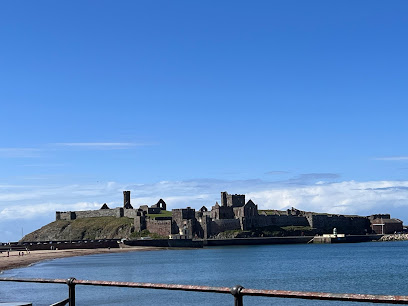
Castle Rushen
Discover the rich medieval history and stunning architecture of Castle Rushen, a must-see historical landmark in Castletown, Isle of Man.
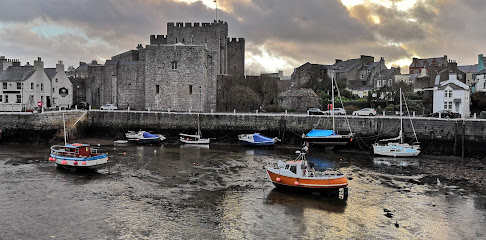
The Great Laxey Wheel
Discover the Great Laxey Wheel, a stunning symbol of Isle of Man's industrial heritage, offering breathtaking views and rich history for all visitors.

House of Manannan
Discover the rich maritime history and cultural heritage of the Isle of Man at the enchanting House of Manannan in Peel.
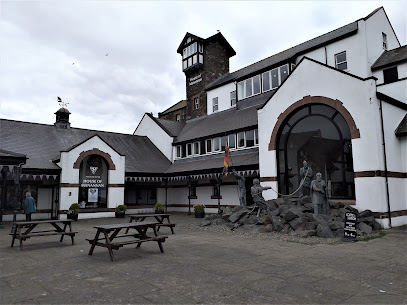
Glen Helen
Experience the natural beauty and tranquility of Glen Helen, a national forest in the Isle of Man, ideal for walking, picnicking, and wildlife observation.

Milntown Estate and Gardens
Explore the enchanting Milntown Estate and Gardens, a historic gem featuring stunning gardens and a delightful café in Ramsey, Isle of Man.
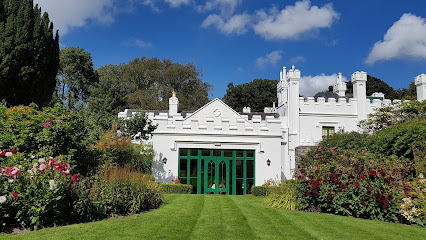
Point of Ayre Lighthouse
Discover the captivating history and breathtaking views at the Point of Ayre Lighthouse, a historical landmark on the Isle of Man.
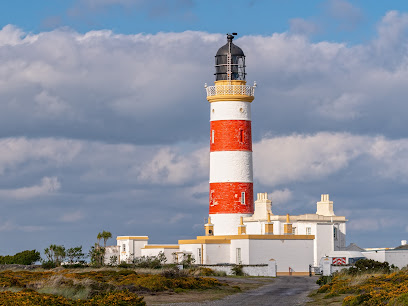
Tynwald Hill
Discover the rich heritage of Tynwald Hill, the historic site of the Isle of Man's parliament, surrounded by stunning natural beauty.
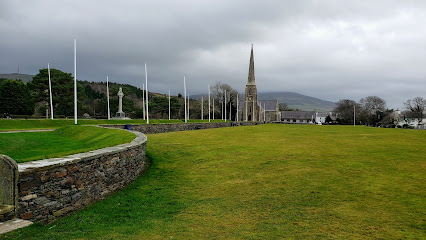
Ballaglass Glen
Experience the serene beauty and natural wonders of Ballaglass Glen, the Isle of Man's enchanting national forest perfect for outdoor adventures.
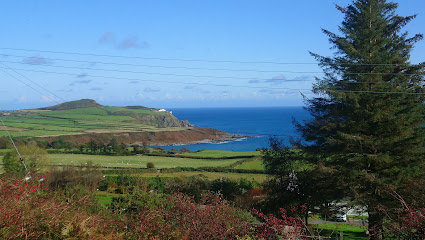
Milner's Tower
Discover the stunning vistas and rich history at Milner's Tower in Bradda East, a must-see landmark on the Isle of Man.
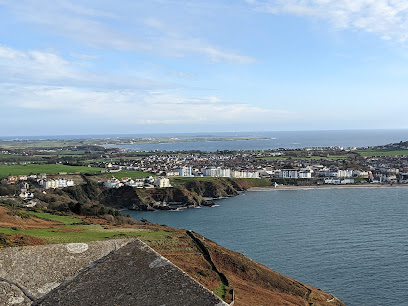
Port Erin Beach
Discover the tranquil beauty of Port Erin Beach, a coastal paradise on the Isle of Man perfect for relaxation, family fun, and breathtaking views.
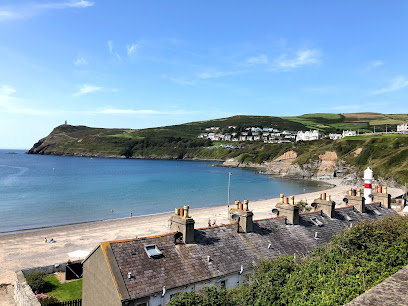
Fairy Bridge
Explore the enchanting Fairy Bridge on the Isle of Man, where folklore and stunning views create a magical experience for every tourist.
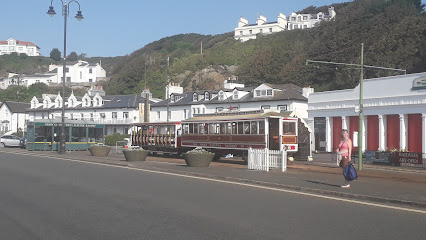
Cornerhouse Coffee
Discover the charm of Cornerhouse Coffee in Port St Mary, where delicious brews and stunning views create the perfect coffee experience.
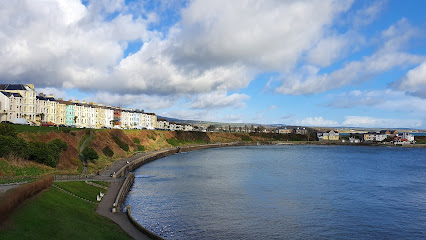
The Chasms
Explore the Chasms of the Isle of Man, a stunning landmark of cliffs and coastal beauty, rich in history and perfect for nature lovers.
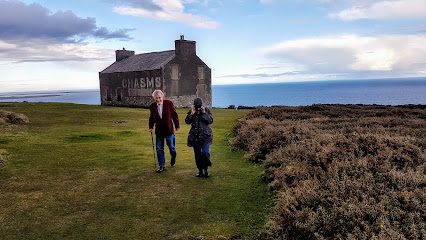
The Railway Station Hotel Port St Mary
Discover the charm of The Railway Station Hotel in Port St Mary, where local flavors meet cozy accommodations for an unforgettable Isle of Man experience.
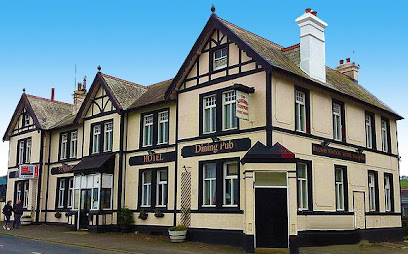
Unmissable attractions to see
Manx Museum
Experience the captivating history and culture of the Isle of Man at the renowned Manx Museum in Douglas, a must-visit for all tourists.
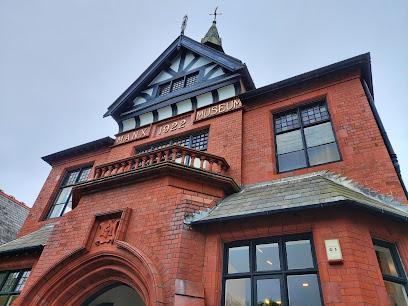
Peel Castle
Explore Peel Castle, a historical treasure in the Isle of Man, showcasing medieval architecture and breathtaking coastal views for an unforgettable experience.
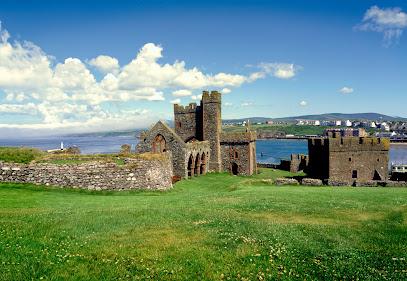
Castle Rushen
Experience the rich history and stunning architecture of Castle Rushen, a must-visit landmark in Castletown, Isle of Man.
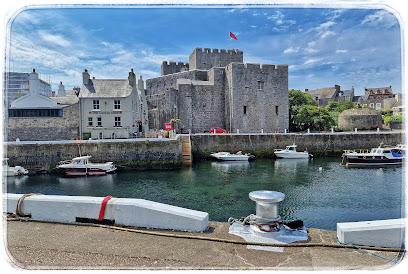
The Great Laxey Wheel
Discover the Great Laxey Wheel, a Victorian engineering marvel in the Isle of Man, offering breathtaking views and rich industrial history.
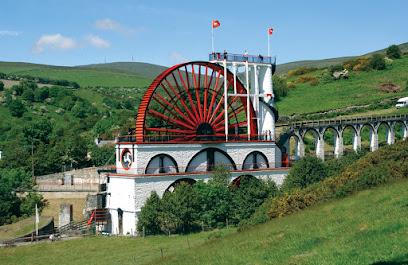
House of Manannan
Explore the Isle of Man's maritime history and Celtic heritage at the captivating House of Manannan museum in Peel.
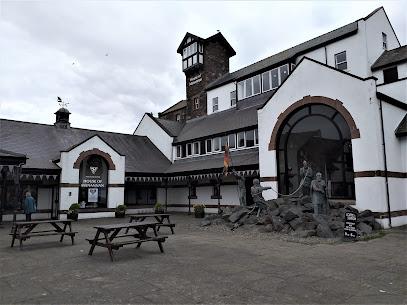
Isle of Man Motor Museum
Explore the Isle of Man Motor Museum, where automotive history comes alive with over 400 classic vehicles and captivating exhibits in an engaging atmosphere.
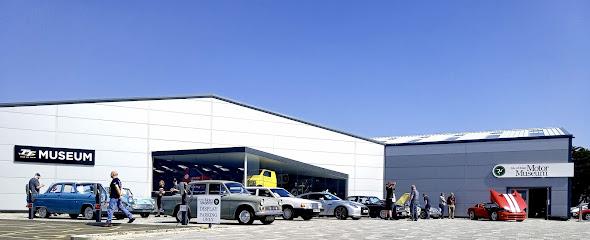
Point of Ayre Lighthouse
Explore the stunning Point of Ayre Lighthouse on the Isle of Man, a historical landmark offering breathtaking coastal views and rich maritime heritage.
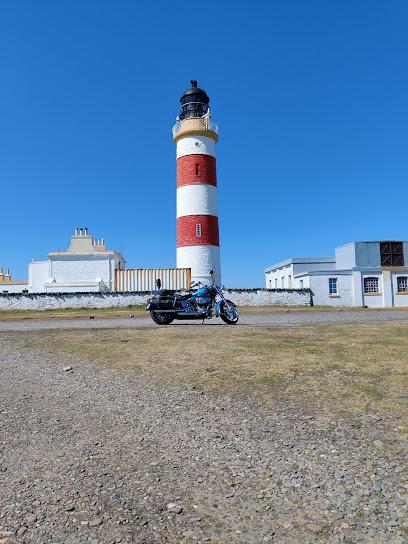
Cregneash
Explore Cregneash, a living museum on the Isle of Man, showcasing traditional Manx culture, breathtaking landscapes, and rich history.
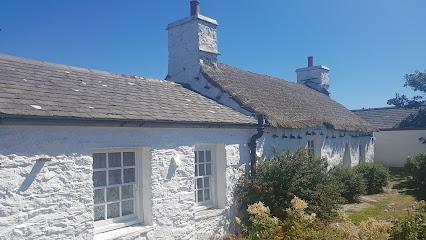
Niarbyl Beach
Experience the breathtaking beauty of Niarbyl Beach on the Isle of Man, a stunning coastal retreat perfect for relaxation and adventure.
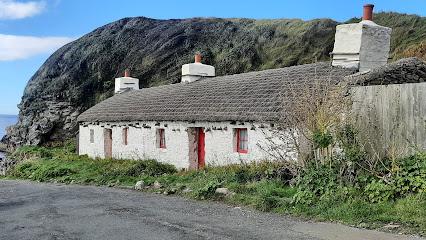
Groudle Glen Railway
Discover the enchanting Groudle Glen Railway, a historic narrow-gauge train ride through the stunning landscapes of the Isle of Man.
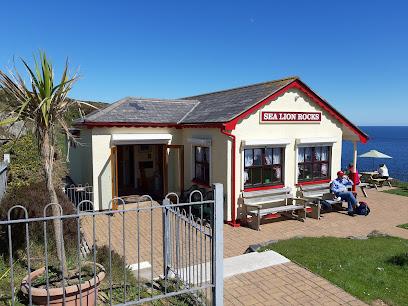
Fairy Bridge
Experience the magical charm of Fairy Bridge, a historic landmark in the Isle of Man, enriched with folklore and surrounded by breathtaking nature.
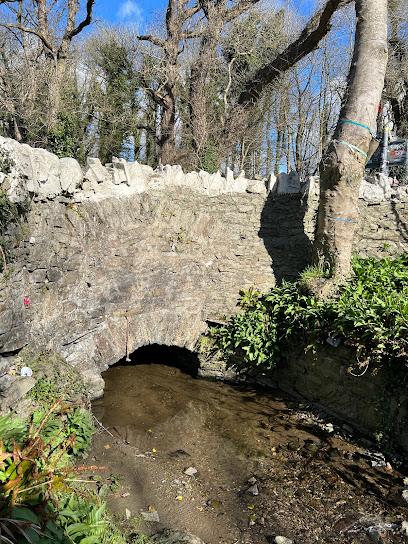
Manx Aviation and Military Museum
Discover the Manx Aviation and Military Museum, a treasure trove of history that showcases the Isle of Man's military and aviation legacy.
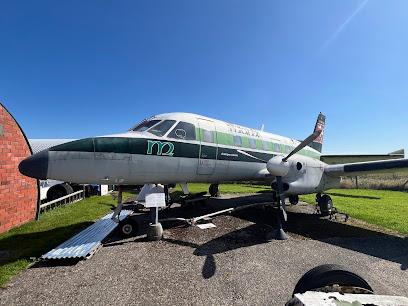
Snaefell
Discover the breathtaking beauty and rich history of Snaefell, the highest peak on the Isle of Man, perfect for adventurers and nature lovers alike.
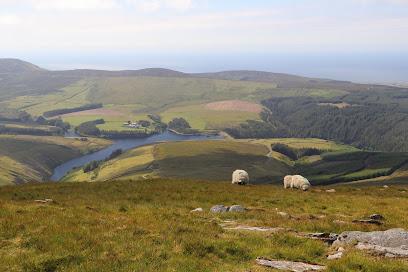
Isle of Man Steam Railway - (Douglas, Station)
Explore the Isle of Man's stunning landscapes aboard the historic Steam Railway, a charming journey through time and nature.

Centre for WW1 Internment, Knockaloe and Patrick Community Centre
Explore the rich history of the Isle of Man at the Centre for WW1 Internment, where stories of the past come to life through engaging exhibits and artifacts.
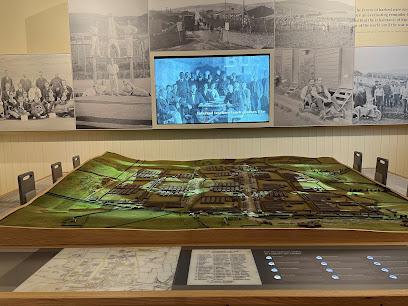
Essential places to dine
The Sound Cafe Isle of Man
Discover exquisite dining at The Sound Cafe in Port Erin, where breathtaking coastal views meet delicious local cuisine.
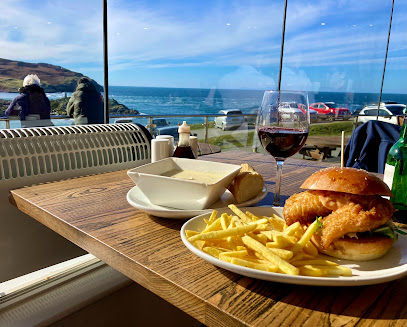
Port Erin Chippy & Diner
Discover the best fish and chips in Port Erin at Port Erin Chippy & Diner - where tradition meets taste!
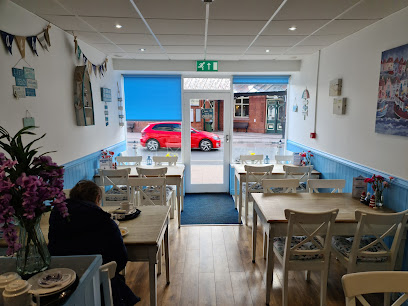
The Marine Hotel
Experience breathtaking views and exquisite local cuisine at The Marine Hotel in Peel - your perfect coastal getaway.

Shore Hotel, Gansey
Discover breathtaking coastal views and exceptional hospitality at Shore Hotel in Gansey – your perfect retreat on the Isle of Man.

Bay Hotel
Experience warm hospitality and delicious local cuisine at Bay Hotel in Port Erin, your cozy retreat on the Isle of Man's stunning coastline.
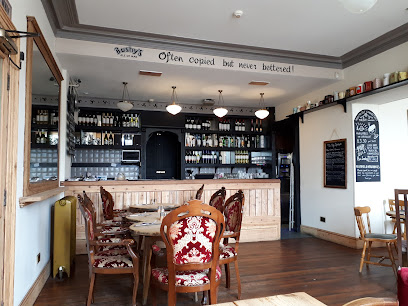
The Forge
Discover The Forge in Mount Murray - where local flavors meet culinary creativity in a charming dining atmosphere.
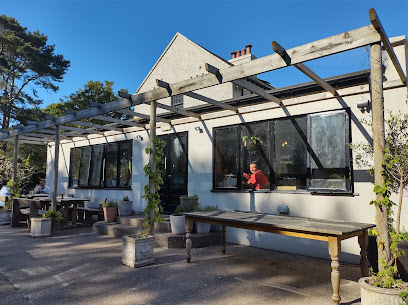
Bradda Glen Restaurant, Function Rooms & Wedding Venue
Discover Bradda Glen: A picturesque restaurant offering exquisite cuisine and stunning views in Port Erin's serene landscape.

The Boatyard Restaurant
Experience exquisite dining at The Boatyard Restaurant in Peel – where fresh seafood meets breathtaking harbor views.
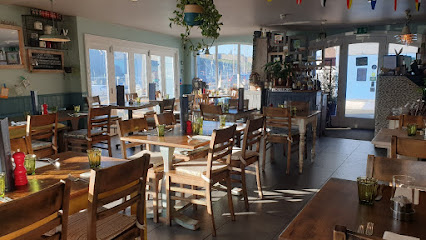
Niarbyl Cafe
Experience delightful cuisine with breathtaking ocean views at Niarbyl Cafe on the beautiful Isle of Man.
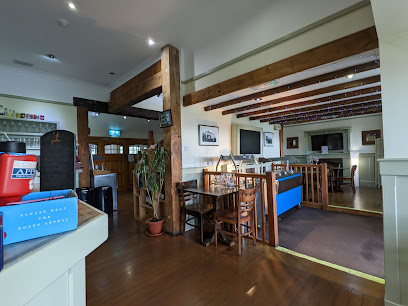
The Station
Discover The Station in Port Erin - where delicious food meets friendly service in a vibrant pub setting.
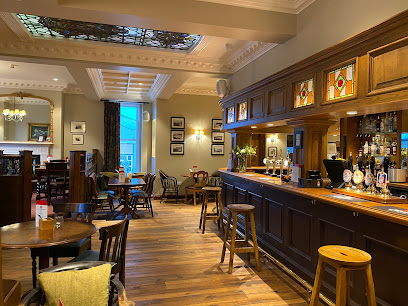
Harbour Lights Café & Restaurant
Experience delightful English cuisine with breathtaking coastal views at Harbour Lights Café & Restaurant in Peel, Isle of Man.
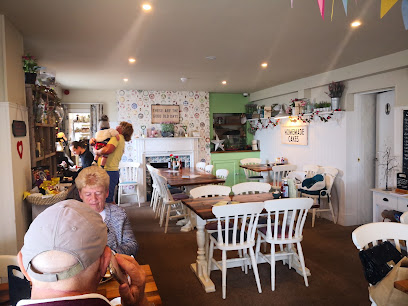
La Mona Lisa
Discover authentic Italian cuisine at La Mona Lisa in Laxey - where every meal is a celebration of flavor and tradition.

Albert Hotel
Discover comfort and local charm at Albert Hotel, where cozy pub vibes meet delightful hotel accommodations in scenic Port St Mary.
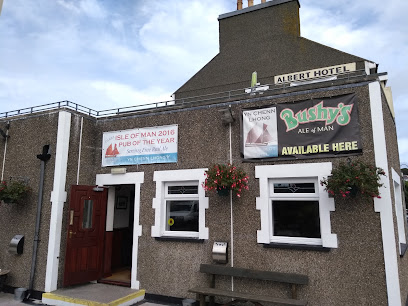
La Gusto Pizza (Isle of Man)
Discover La Gusto Pizza in Port Erin - where authentic Italian flavors meet convenient takeout options on the Isle of Man.
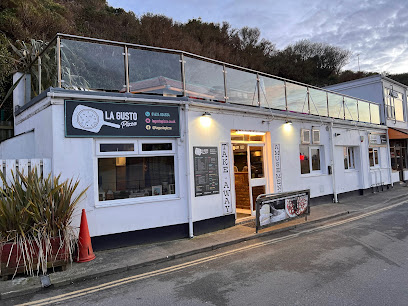
The Colby Glen
Experience the charm of The Colby Glen in Isle of Man - your go-to pub for delicious food and local brews.
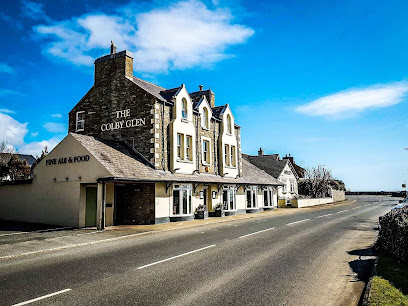
Markets, malls and hidden boutiques
Cornerhouse Coffee
Experience the perfect blend of quality coffee and warm ambiance at Cornerhouse Coffee, a must-visit café in Port St Mary, Isle of Man.
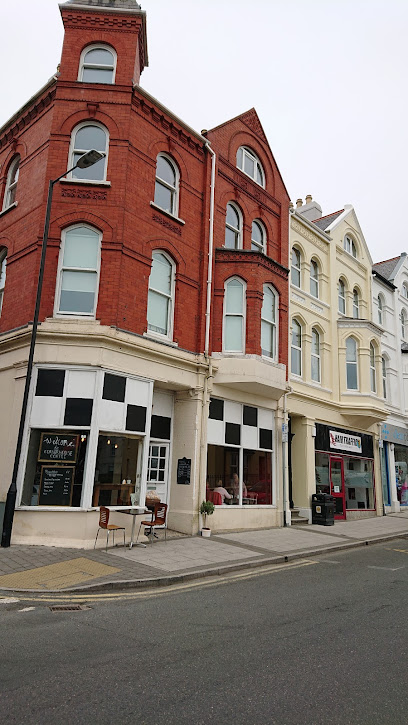
Bridge Bookshop
Discover unique books, art supplies, and gifts at Bridge Bookshop in Port Erin, a must-visit for culture lovers on the Isle of Man.
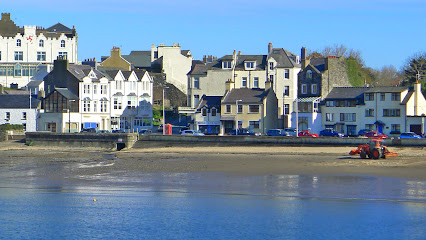
Ken Quine Hardware, Gardenware and Cookware
Discover quality hardware, gardenware, and kitchen essentials at Ken Quine Hardware in Port Erin, Isle of Man – where every home project begins.
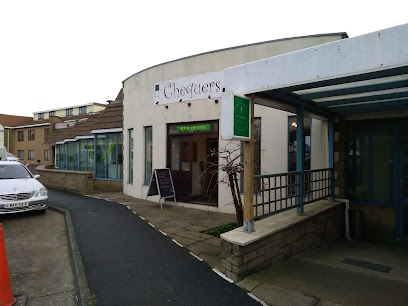
Scoops
Indulge in delicious ice cream at Scoops, a vibrant ice cream shop on the Isle of Man offering a variety of flavors for every sweet tooth.

Co-op Food - Port Erin
Discover quality shopping at Co-op Food in Port Erin, where local flavors and convenience meet in a charming coastal town.
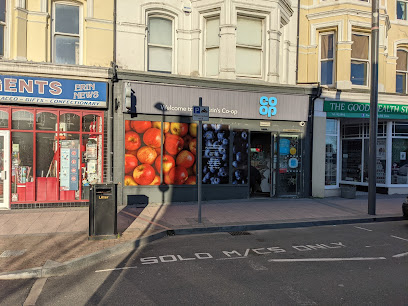
Co-op Food - Port St. Mary
Co-op Food in Port St. Mary: Your local convenience store for fresh produce and essentials on the Isle of Man.
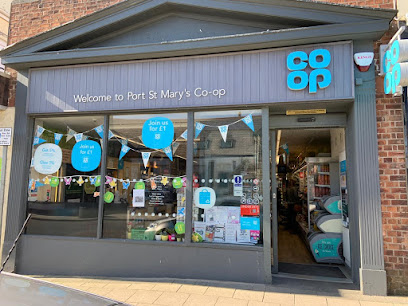
Mantons Cards
Discover joy and imagination at Mantons Cards, Port Erin's beloved toy store offering an array of toys, gifts, and enchanting cards for all ages.

Discover Diving
Explore the breathtaking underwater world at Discover Diving in Port St Mary, Isle of Man, your gateway to unforgettable diving adventures.
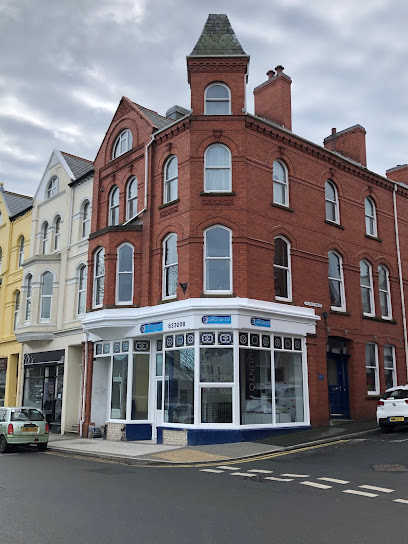
Trend Gift Shop Port Erin.
Explore Trend Gift Shop Port Erin for unique Isle of Man gifts, from handmade candles to exquisite jewelry, all in a charming atmosphere.
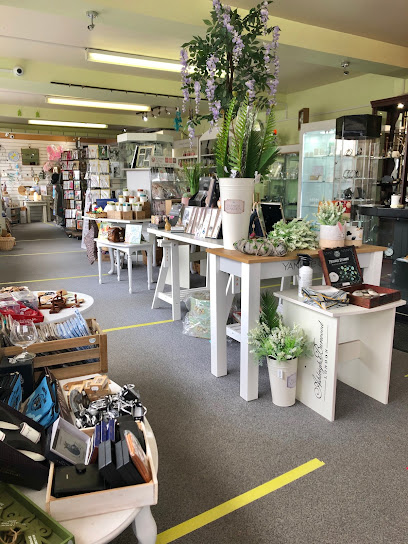
Harrison S & M
Shop local at Harrison S & M, Port Erin's premier shoe store, offering quality footwear and expert advice in a welcoming atmosphere.
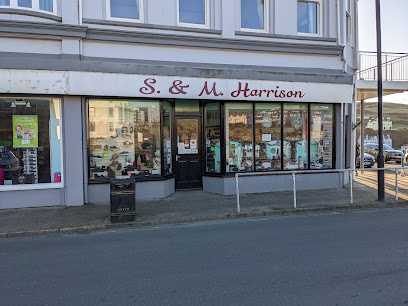
Soaral
Discover unique fragrances and indulge in a sensory journey at Soaral, a charming perfume store in Port Erin, Isle of Man.
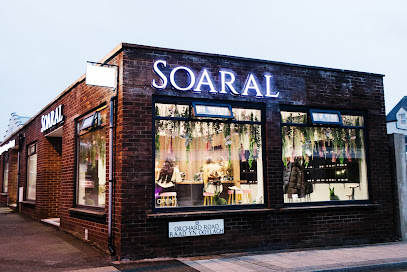
Berries Luxury Bakers and Confectioners
Discover the sweet side of Port St Mary at Berries Luxury Bakers and Confectioners, where every treat is a handcrafted masterpiece.
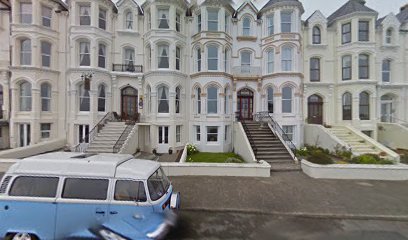
Good Health Store
Explore the Good Health Store in Port Erin for a wide selection of organic foods, supplements, and health products on the Isle of Man.
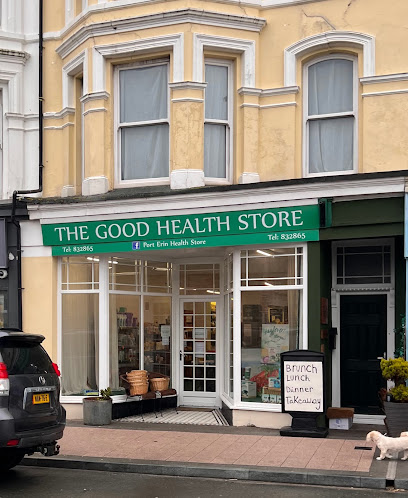
Clear Pharmacy, Port St Mary
Discover Clear Pharmacy in Port St Mary—your essential stop for health and wellness on the Isle of Man.
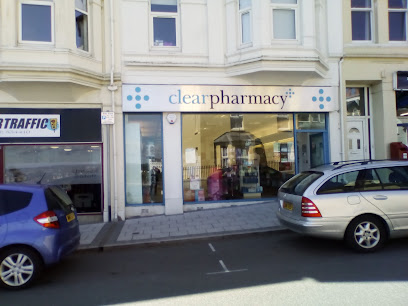
Torden Stores Ltd
Discover local treasures and essentials at Torden Stores Ltd in Port St Mary, a charming general store on the Isle of Man.

Essential bars & hidden hideouts
The Sound Cafe Isle of Man
Discover The Sound Cafe in Port Erin, Isle of Man - where delicious food meets breathtaking views of the Calf of Man.
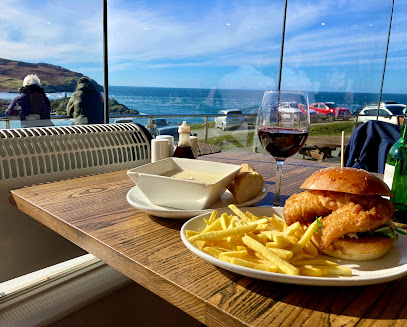
Port Erin Chippy & Diner
Discover the best fish and chips at Port Erin Chippy & Diner, a charming British diner in the heart of the Isle of Man, perfect for every seafood lover.
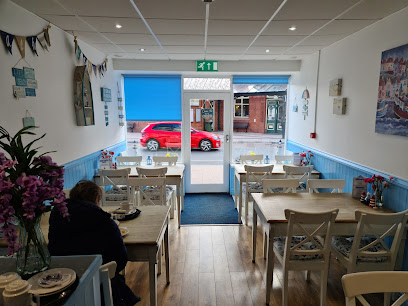
The George Hotel
Discover the charm of The George Hotel, a perfect blend of comfort, history, and local flavor in the heart of Castletown.

The Sidings
Experience the warmth and charm of The Sidings, a beloved pub in Castletown offering local ales and a cozy atmosphere.
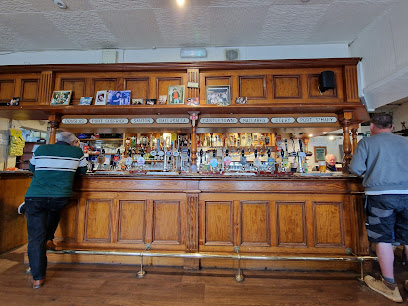
Bay Hotel
Discover the Bay Hotel: A seaside pub in Port Erin offering delicious food, a vibrant atmosphere, and stunning views of the Isle of Man.
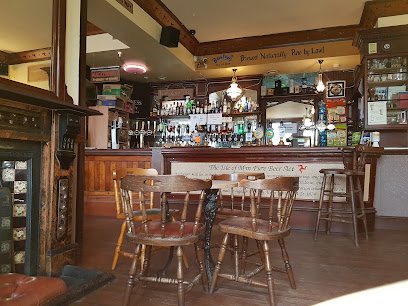
The Station
Experience the charm of The Station, a cozy pub in Port Erin, Isle of Man, offering delicious food, local ales, and a welcoming atmosphere.
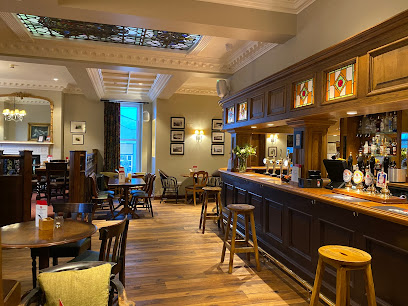
The Whitestone Inn
Experience the warmth and charm of The Whitestone Inn, a traditional pub on the Isle of Man offering local cuisine and a cozy atmosphere.

Albert Hotel
Experience the warm hospitality and local flavors at Albert Hotel, your ideal retreat in Port St Mary, Isle of Man.
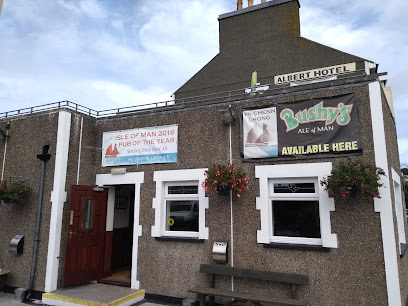
The Colby Glen
Experience the charm of The Colby Glen, a cozy pub in Colby offering local ales, hearty meals, and a warm atmosphere for all visitors to the Isle of Man.
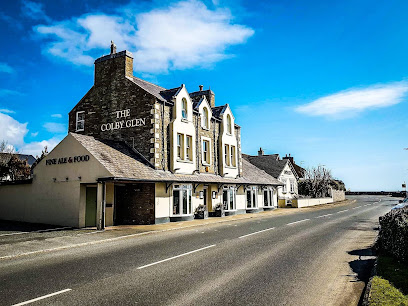
Tynwald Hill Inn
Discover the heart of the Isle of Man at Tynwald Hill Inn, a cozy pub offering traditional meals and local charm in St John's.
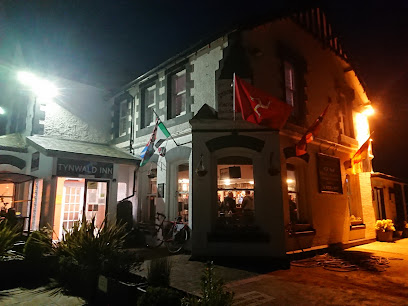
Bar George
Discover the finest wines and exquisite cuisine at Bar George, a premier wine bar and restaurant in Douglas, Isle of Man.
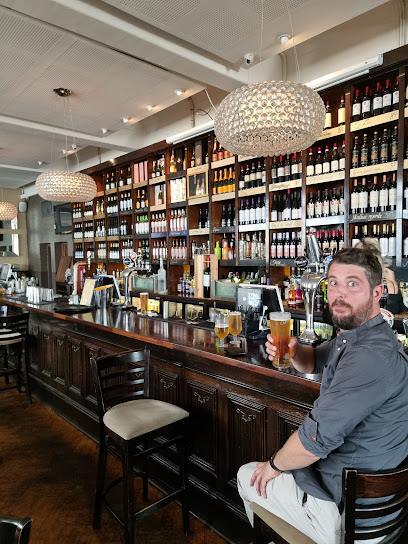
Andrea's Italian Restaurant
Discover the authentic flavors of Italy at Andrea's Italian Restaurant, a culinary haven in the Isle of Man, perfect for every food lover.
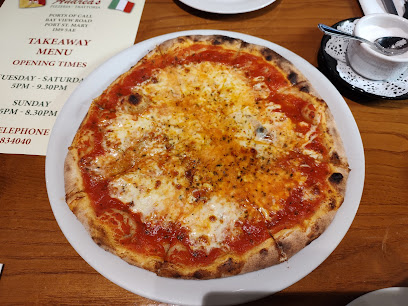
The Castle Arms
Discover the charm of The Castle Arms, a cozy pub in Castletown, offering local brews and traditional dishes by the picturesque quayside.
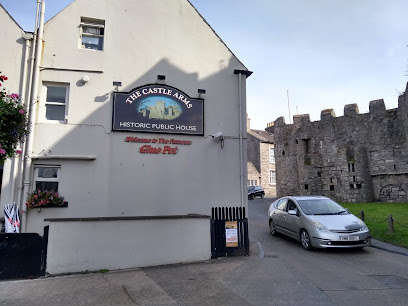
Breagle Glen Indian Restaurant
Experience the rich flavors of India at Breagle Glen Indian Restaurant in Port Erin - a must-visit culinary destination for tourists.
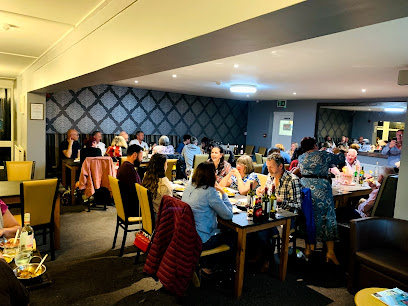
Cornerhouse Coffee
Discover Cornerhouse Coffee in Port St Mary, where exceptional brews and cozy ambiance await every visitor on the Isle of Man.
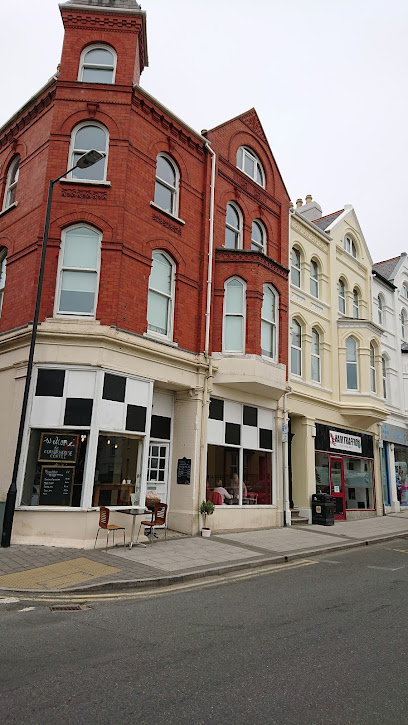
Local Phrases
-
- HelloHai
[haɪ] - GoodbyeSlane
[slɑːn] - YesYess
[jɛs] - NoNoo
[nuː] - Please/You're welcomePleeas/Cha vel failt ort
[pliːz/tʃaː vɛl falt ort] - Thank youGura mie ayd
[ɡʊrə miː aɪd] - Excuse me/SorryFargh my veign
[fɑːrɡ miː veɪn] - How are you?Kys t'ou?
[kiːs tuː] - Fine. And you?Sooill. As t'ou?
[suːɪl əs tuː] - Do you speak English?Jeeagh oo Gaelg?
[dʒiːə oː ɡeːlɡ] - I don't understandCha nel feme aym
[tʃaː nɛl fem aɪm]
- HelloHai
-
- I'd like to see the menu, pleaseTa mee gra dy kinjagh y cairys, cur dooys
[taː miː ɡrɑː də kɪndʒə ɪ kɑːrɪs kʊr duːs] - I don't eat meatCha nel’m bee-ast jeant
[tʃaː nɛlm biː æst dʒɛnt] - Cheers!Slaynt
[slɑːnt] - I would like to pay, pleaseTa mee gra dy phagh, cur dooys
[taː miː ɡrɑː də feɪ kʊr duːs]
- I'd like to see the menu, pleaseTa mee gra dy kinjagh y cairys, cur dooys
-
- Help!Cooney!
[kuːniː] - Go away!Gow wheesh!
[ɡaʊ wiːʃ] - Call the Police!Cur y Phohees!
[kʊr ə fiːz] - Call a doctor!Cur dhoctor!
[kʊr dɒktər] - I'm lostTa mee jerrey
[taː miː dʒɛri] - I'm illTa mee chorree
[taː miː xɔri]
- Help!Cooney!
-
- I'd like to buy...Ta mee gra dy vee...
[taː miː ɡrɑː də viː] - I'm just lookingCha nel'm gra dy lhiastey
[tʃaː nɛlm ɡrɑː də lɪəstɪ] - How much is it?Cre va shen?
[kriː və ʃɛn] - That's too expensiveShen dy voyl shickyr
[ʃɛn də viːl ʃɪkər] - Can you lower the price?Vel oo lurg y phriccys?
[vɛl uː lɜːr ə frɪksis]
- I'd like to buy...Ta mee gra dy vee...
-
- What time is it?Cre ta’n am?
[kriː tən æm] - It's one o'clockTa’n am jeih
[tən æm dʒeɪ] - Half past (10)mean yn jeih (10)
[miːn ən dʒeɪ (10)] - MorningOie vie
[ɔɪ viː] - AfternoonArd-ouyr
[ɑːrd ɔɪr] - EveningLaaght
[lɑːxt] - YesterdayJeheiney
[dʒəheɪniː] - TodayJiu
[dʒɪuː] - TomorrowYindoo
[jiːnduː] - 1Un
[ʌn] - 2Doo
[duː] - 3Tree
[triː] - 4Kiare
[kɪər] - 5Queig
[kweɪɡ] - 6Shey
[ʃeɪ] - 7Shiaght
[ʃɪət] - 8Oie
[ɔɪ] - 9Nuy
[nuːi] - 10Jeih
[dʒeɪ]
- What time is it?Cre ta’n am?
-
- Where's a/the...?C’raad t’er...?
[kraːd tɛr] - What's the address?Cre ta’n shennal?
[kriː tən ʃɛnəl] - Can you show me (on the map)?Vel oo er n’yindyssagh dou (er ymmodee)?
[vɛl uː ɛr niːndɪsə dɔu ɛr ɪmɒdi] - When's the next (bus)?Cre ta’n cheayrt noi (buss)?
[kriː tən xiːrt nɔɪ bʌs] - A ticket (to ....)Loyr (dy ....)
[lɔɪr də]
- Where's a/the...?C’raad t’er...?
History of Port St Mary
-
Port St Mary, known in Manx as 'Purt le Moirrey,' has a rich history dating back to the Viking Age. The area was initially settled by Norsemen during the 8th and 9th centuries. Evidence of Viking presence includes burial sites and artifacts, which highlight the significance of the Isle of Man as a strategic location in the Irish Sea.
-
During the medieval period, the Isle of Man was governed by the Lords of Mann, a title that saw a succession of rulers from the Norse, Scottish, and English crowns. Port St Mary was a small fishing village during this time, contributing to the island's economy through its bountiful marine resources. The village's layout still reflects its medieval origins, with narrow lanes and traditional Manx cottages.
-
In the 19th century, Port St Mary experienced significant growth due to the flourishing fishing industry. The village became a major hub for herring fishing and later, for scallops and lobsters. The construction of the Alfred Pier in 1882 facilitated the expansion of the fishing fleet and enhanced the village's connectivity with other maritime trade routes.
-
The opening of the Isle of Man Railway in 1874 marked a turning point for Port St Mary, making it more accessible to visitors and boosting tourism. The railway connected the village to Douglas, the island's capital, and other key locations, transforming Port St Mary into a popular holiday destination known for its picturesque landscapes and serene beaches.
-
During World War II, the Isle of Man, including Port St Mary, played a crucial role as a location for internment camps. These camps housed enemy aliens and political detainees. The island's remote yet strategic position made it an ideal location for such facilities. The legacy of this period is still evident in local historical records and sites.
-
Today, Port St Mary is a vibrant community that balances its rich historical heritage with modern development. The village is known for its maritime culture, annual festivals, and as a gateway to the Calf of Man, a small island and bird sanctuary. The preservation of historical sites, combined with contemporary amenities, makes Port St Mary a unique blend of the past and present.
Port St Mary Essentials
-
Port St Mary is located in the southern part of the Isle of Man. The nearest airport is Isle of Man Airport (Ronaldsway), which is approximately 6 kilometers away. From the airport, you can take a taxi or a bus to reach Port St Mary. Ferries also operate to the Isle of Man from Liverpool, Heysham, Belfast, and Dublin, docking at Douglas. From Douglas, you can take a bus or taxi to reach Port St Mary, which is about a 30-minute drive.
-
Public transportation in Port St Mary is reliable and includes buses that connect to other parts of the island. Taxis are also readily available. For those who enjoy cycling, bicycles can be rented, and the town is quite walkable. Car rentals are an option for those who prefer the flexibility of driving.
-
The currency used in the Isle of Man is the Manx Pound (IMP), which is equivalent to the British Pound Sterling (GBP). Both currencies are accepted. Credit and debit cards are widely accepted in most establishments, but it's advisable to carry some cash for smaller shops and rural areas. ATMs are available around the town.
-
Port St Mary is generally very safe for tourists. There are no specific areas with high crime rates targeting tourists. However, as with any destination, it is always wise to stay vigilant, especially at night. Keep your belongings secure and be aware of your surroundings.
-
In case of an emergency, dial 999 or 112 for immediate assistance. The nearest police station and medical facilities are located in Douglas, about 30 minutes away by car. It is recommended to have travel insurance that covers medical emergencies. For minor health issues, there are local pharmacies where you can purchase over-the-counter medications.
-
Fashion: Dress comfortably but modestly. The weather can be unpredictable, so layers are advisable. Religion: While there are no strict religious customs to follow, always be respectful when visiting churches and religious sites. Public Transport: Be polite and considerate. Offer your seat to elderly passengers and avoid eating or drinking on public transport. Greetings: A simple handshake or a friendly nod is customary. Eating & Drinking: Do try the local seafood and Manx kippers. Don’t forget to tip, usually around 10-15% in restaurants.
-
For a local experience, visit the weekly farmers' market where you can buy fresh produce and artisanal goods. Engage with the locals, who are known for their friendliness. Don’t miss the opportunity to explore the coastal paths and enjoy the scenic views of the Irish Sea. For a unique experience, consider attending a local event or festival, such as the Port St Mary Lifeboat Day.
Trending Landmark in Port St Mary
Nearby Cities to Port St Mary
-
Things To Do in Port Erin
-
Things To Do in Castletown
-
Things To Do in Ballasalla
-
Things To Do in Peel
-
Things To Do in Douglas
-
Things To Do in Onchan
-
Things To Do in Kirk Michael
-
Things To Do in Laxey
-
Things To Do in Ramsey
-
Things To Do in Belfast
-
Things To Do in Drogheda
-
Things To Do in Dublin
-
Things To Do in Bray
-
Things To Do in Liverpool
-
Things To Do in Chester









